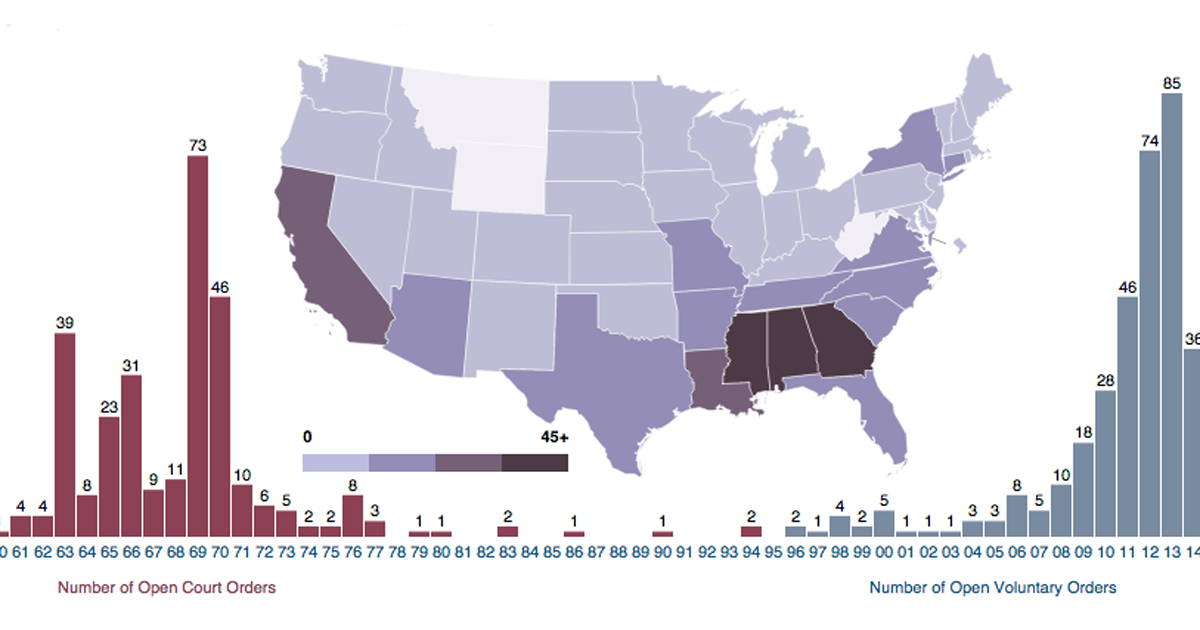More School Desegregation Orders Expected To End: A Legal Analysis

Table of Contents
The Legal Basis for School Desegregation Orders
The foundation for school desegregation orders rests firmly on the landmark 1954 Supreme Court case, Brown v. Board of Education. This ruling declared state laws establishing separate public schools for Black and white students to be unconstitutional, overturning the "separate but equal" doctrine established in Plessy v. Ferguson. Brown v. Board of Education didn't immediately lead to widespread desegregation; it took years of legal battles, protests, and federal intervention to implement.
The remedies used to achieve desegregation varied, often including:
- Busing: Transporting students across school district lines to achieve racial balance.
- Redrawing school district boundaries: Altering district maps to create more integrated schools.
- Mandatory affirmative action programs: Implementing programs aimed at actively recruiting minority students and faculty.
Several subsequent Supreme Court cases further shaped the legal landscape of school desegregation, including:
- Swann v. Charlotte-Mecklenburg Board of Education (1971): Affirmed the use of busing as a remedy for de jure segregation.
- Milliken v. Bradley (1974): Limited the scope of desegregation orders to districts found guilty of intentional segregation.
- Parents Involved in Community Schools v. Seattle School Dist. No. 1 (2007): Restricted the use of race as a primary factor in assigning students to schools.
Understanding these legal definitions is crucial:
- De jure segregation: Segregation mandated by law.
- De facto segregation: Segregation resulting from factors other than explicit laws, such as housing patterns.
The history of specific school desegregation orders, such as those in Little Rock, Arkansas, and Charlotte-Mecklenburg, North Carolina, highlights the complex legal and social battles involved in achieving integration.
Factors Leading to the Termination of School Desegregation Orders
The termination of school desegregation orders often hinges on arguments demonstrating that the goals of desegregation have been met. These arguments typically involve:
- Demonstrating unitary status: Proving that the school district has eliminated the vestiges of past segregation and is operating in a non-discriminatory manner. This often requires extensive statistical analysis and evidence of equitable resource allocation.
- Changes in demographics: Shifts in population distribution may make it more challenging to maintain racial balance.
- Evolving legal interpretations: The Supreme Court's rulings have influenced the standards used to assess desegregation efforts, sometimes leading to a narrower interpretation of what constitutes successful integration.
Several factors contribute to the ending of these orders:
- Successful appeals: School districts successfully argue in court that they have achieved unitary status and are no longer subject to desegregation orders.
- Arguments concerning efficacy: Challenges to the effectiveness of current desegregation methods, particularly busing, lead to calls for termination.
- Local community involvement: Local communities play a role in advocating for or against the continuation of desegregation orders. This can involve political pressure and legal challenges.
- Statistical data: The number of orders ending and their geographic distribution is a clear indicator of this trend. Data showing increased racial integration within districts often accompanies termination petitions.
Potential Consequences of Ending School Desegregation Orders
The termination of school desegregation orders raises serious concerns about the potential for re-segregation and its impact on educational equity. Studies consistently demonstrate a strong correlation between school segregation and:
- Lower academic achievement for minority students.
- Increased achievement gaps between racial groups.
- Limited access to quality resources and opportunities.
Ending these orders could lead to:
- Legal challenges: Civil rights organizations and individuals may challenge the termination of orders, arguing that it violates the constitutional rights of minority students.
- Impact on diverse student populations: The potential for increased segregation disproportionately affects minority students, particularly Black and Hispanic students, potentially exacerbating existing inequalities.
- Federal and state government roles: The role of these governing bodies in maintaining desegregation efforts must be considered. Federal funding and enforcement play a significant role in shaping educational policy.
The Future of School Desegregation and Related Policy
The debate surrounding the future of school desegregation remains active and complex. Several alternative strategies are being considered to promote school integration and diversity, including:
- Magnet schools: Specialized schools designed to attract students from diverse backgrounds.
- Charter schools: Publicly funded but independently operated schools, some of which actively pursue diversity.
- New legislation: Proposals for new legislation continue to be introduced that aim to address school segregation and promote integration.
The potential impact of future Supreme Court decisions on desegregation cases remains a critical factor influencing policy. The ongoing dialogue about school diversity and integration requires a multi-pronged approach that incorporates legal, social, and political strategies.
Conclusion: The Ongoing Fight for School Desegregation
The ending of school desegregation orders represents a significant turning point in the ongoing struggle for racial equality in education. While some argue that these orders have outlived their usefulness, the potential consequences of allowing them to expire without robust alternative strategies are significant and potentially detrimental to minority students. The legal arguments surrounding the termination of these orders highlight the continuing tension between legal precedent, evolving social norms, and the pursuit of equitable educational opportunities for all children. We must remain vigilant in our efforts to fight school segregation and ensure desegregated schools for future generations. To learn more about the ongoing struggle for desegregation and to get involved in advocating for equitable education, visit [link to relevant organization].

Featured Posts
-
 L Aide Humanitaire A Gaza Macron Denonce Le Risque De Militarisation Par Israel
May 03, 2025
L Aide Humanitaire A Gaza Macron Denonce Le Risque De Militarisation Par Israel
May 03, 2025 -
 Trumps Tariffs Automakers Struggle To Navigate The Uncertainty
May 03, 2025
Trumps Tariffs Automakers Struggle To Navigate The Uncertainty
May 03, 2025 -
 Inclement Weather Closes Tulsa Public Schools Wednesday
May 03, 2025
Inclement Weather Closes Tulsa Public Schools Wednesday
May 03, 2025 -
 Fortnite Item Shop Long Awaited Skin Returns Confirmed
May 03, 2025
Fortnite Item Shop Long Awaited Skin Returns Confirmed
May 03, 2025 -
 A Place In The Sun Your Guide To Finding The Perfect Overseas Property
May 03, 2025
A Place In The Sun Your Guide To Finding The Perfect Overseas Property
May 03, 2025
Latest Posts
-
 Dari Sampah Menjadi Harta Manfaat Cangkang Telur Bagi Pertanian Dan Peternakan
May 04, 2025
Dari Sampah Menjadi Harta Manfaat Cangkang Telur Bagi Pertanian Dan Peternakan
May 04, 2025 -
 Raya Promotion Free Hpc Ev Charging On Shell Recharge East Coast
May 04, 2025
Raya Promotion Free Hpc Ev Charging On Shell Recharge East Coast
May 04, 2025 -
 Daur Ulang Cangkang Telur Pupuk Alami Dan Sumber Kalsium Untuk Tanaman Dan Hewan
May 04, 2025
Daur Ulang Cangkang Telur Pupuk Alami Dan Sumber Kalsium Untuk Tanaman Dan Hewan
May 04, 2025 -
 Enjoy 100 Rebate On Shell Recharge Hpc Ev Chargers This Raya East Coast
May 04, 2025
Enjoy 100 Rebate On Shell Recharge Hpc Ev Chargers This Raya East Coast
May 04, 2025 -
 T 1
May 04, 2025
T 1
May 04, 2025
